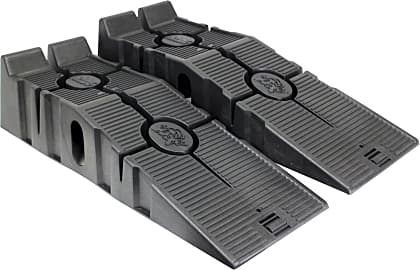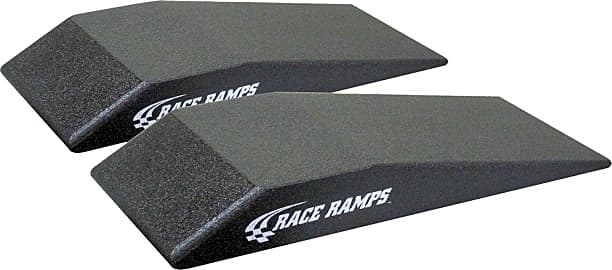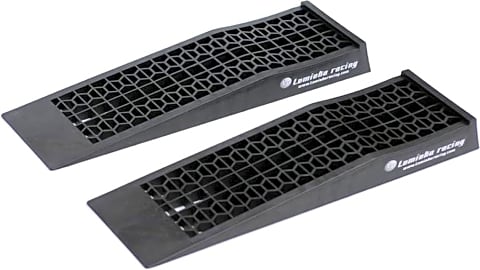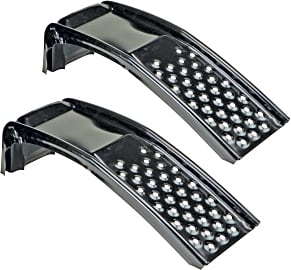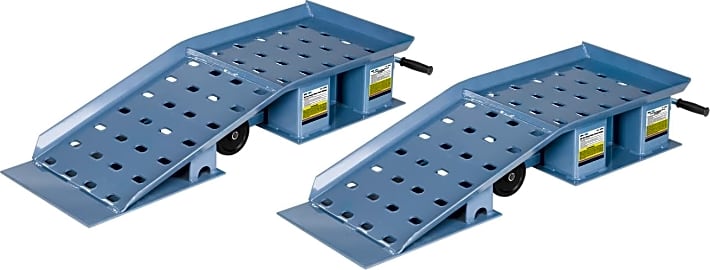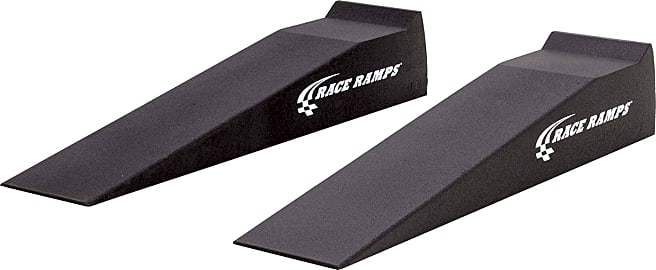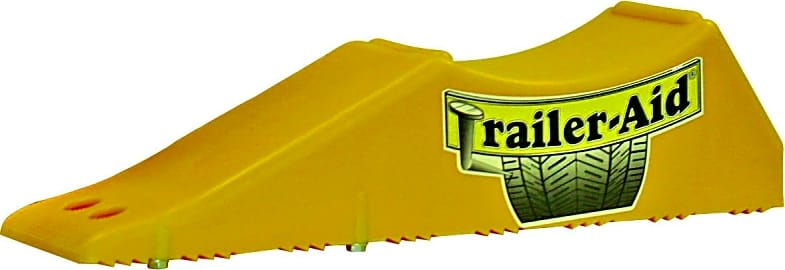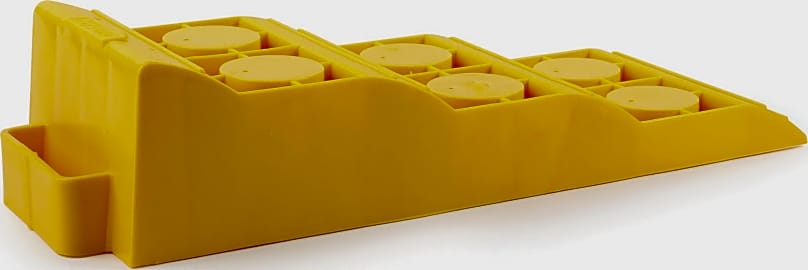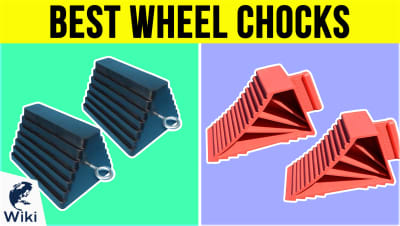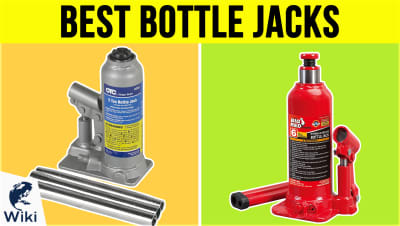The 9 Best Vehicle Ramps

This wiki has been updated 37 times since it was first published in January of 2016. Whether you need to lift a vehicle for regular servicing or to make repairs, something from our selection of sturdy ramps will do the job nicely. We've included both plastic and metal models that can handle some serious weight, as well as specialist options that are suitable for use with low-slung cars and trucks. Always ensure that your ramps are rated to hold the weight of your vehicle. When users buy our independently chosen editorial selections, we may earn commissions to help fund the Wiki.
Editor's Notes
May 28, 2021:
There are a few differences to this round of the Wiki that are worth mentioning. We've upgraded our #1 pick to the Race Ramps RR-56-2, which are identical to the former #1 except they come apart for easy storage and transport. The Race Ramps RR-XT is also a relative newcomer that's notable for its low profile. If you only plan to work on compact cars or small vehicles like ATVs or lawnmowers, the Nicky Nice 612944 are great low-budget choice. On the other end of the spectrum, the OTC 5269 are a commercial-grade pair that can stand up to everything short of industrial trucks.
No matter which pair you select, we strongly recommend having a quality set of wheel chocks in order to ensure safety.
March 31, 2020:
Removed the Scepter 08226 because of availability concerns.
Added the Tomioka Racing Super Slopes and the OTC 5269.
Lifting a car off the ground with a floor jack and jack stands can be somewhat tedious, specially when you have to lift both sides. A pair of ramps like the Race Ramps RR-56 make it quick and easy and you can use them on your own thanks to the backstop. You can always feel out the high point even on models without a backstop like the Race Ramps RR-RU, however, the stop provides some quick peace of mind that your tires are in position.
If you're just starting out in auto repair and are looking to buy some ramps, it's good to keep in mind that they will not replace jacks and stands. Most ramps will lift between 2-8 inches, which is plenty for some tasks but not nearly enough for others. Many repairs require more than a foot of clearance to work comfortably or to have enough space to lower and remove components. So treat ramps as additional tools that you can have at your disposal.
To avoid personal injury, always ensure that your ramps are undamaged and rated to a higher weight than what you intend them to bear.
Benefits Of A Vehicle Ramp
After all, you spend so much time trying to keep all four wheels on the ground, why would you buy a device designed to lift them in the air?
Buying and using a vehicle ramp may seem a little strange to some people. After all, you spend so much time trying to keep all four wheels on the ground, why would you buy a device designed to lift them in the air?
However, sometimes you need your vehicle to be above you, like when you're changing the oil or performing other repairs. Many times, a jack will be used to accomplish this, but they can be dangerous — and if your car falls on your head, guess which one is going to win?
If something goes wrong while using a ramp, the car will roll backwards off the ramp, instead of falling downwards on top of your face. That can still be dangerous, of course, but it's much easier to stop a rolling car than it is to put a smashed head back together.
It's also much faster. Using a hydraulic jack requires you to find the thing, set it up, and crank it again and again until your axle is finally far enough off the ground to let you work. With a ramp, all you have to do is drive up on it, and you're done.
Cars that are low to the ground benefit from using a ramp most of all. It's incredibly difficult — and frustrating — to try to squeeze a jack under an axle that's only a few inches off the ground, whereas driving up on a block is simple no matter how high up your vehicle might be.
That saves you from accidentally damaging your car, as well. If you can't see under it, you might put the jack in the wrong place, and end up bending something that isn't meant to be bent.
While jacks still have their uses — you'll want to use one for changing a tire, for example — ramps can offer many of the same benefits at a fraction of the effort or risk. We don't recommend throwing your jacks away, of course, but rather keeping both on hand in your garage.
Keep them until they finally invent flying cars, at least. Then this will all be much simpler.
Using A Ramp Safely
While ramps are convenient, that doesn't mean you can't hurt yourself while using one if you're not careful. Any time you raise a car off the ground, you're going to be dealing with some danger, so don't take any chances.
Be careful when getting out, as you're going to be higher up than you're used to, and you need to be careful not to jostle the car while you exit.
You should understand that vehicle ramps work best on flat, level surfaces. If you use one on an incline, it will put a ton of strain on your parking brake, and if something goes wrong, your car will take off so fast you'll have no prayer of catching up to it before it hits something.
Make sure that the terrain is firm while you're at it. If the ground shifts, it could jolt the car off the ramp — and anyone underneath it is going to have a bad day. Keep your wheels pointed straight ahead, as well, so they're fully in contact with the ramp.
Once you've found the proper place to work on your car, place the ramps directly ahead of your front tires. Turn your car on and slowly drive up the ramps. Be careful not to gun it right over the edge.
When your car is level, put it in park and activate the emergency brake. Be careful when getting out, as you're going to be higher up than you're used to, and you need to be careful not to jostle the car while you exit.
Next, be sure to chock the rear wheels. This will prevent the car from rolling off the ramp, so if something goes wrong with your brake, the vehicle still won't go anywhere.
If you use the ramp correctly, there should be little risk of an accident — the worst thing that should be able to happen is accidentally driving off of them. That's embarrassing, but you'll live — which is more than you could expect if the car fell on your head.
How To Change Your Own Oil
Cars can be extremely intimidating if you don't know anything about them. Don't let that stop you from changing your own oil, though, as it's pretty simple once you get the hang of it.
The first, and most important, thing to do is to find out what kind of oil your car takes, and how much. You should be able to find this info in your owner's manual. You don't want to put the incorrect grade in your vehicle, as that can shorten the engine's lifespan considerably.
If you don't know what it looks like, open the box and look at the new one.
After that, drive up on the ramps, then slide underneath the car and locate the oil pan. It should be a large reservoir underneath your car with a bolt sticking out the side of it; place a drain pan underneath the bolt, then unscrew it. Black oil should start shooting out (you're rich!).
It will take a few minutes for it to drain completely. While you're waiting, locate your oil filter. If you don't know what it looks like, open the box and look at the new one. Once the oil pan is empty, move your drain underneath the filter and unscrew it. Be careful, though, as it's full of oil. You can take the old oil and filter to a collection center for proper disposal.
Now that your car is completely drained, go ahead and replace both the drain plug and filter. Then, get the new oil and find the oil cap under your hood — it should have a drawing of an oil can on it. Fill it up with the recommended amount, wait a few minutes, and then check the level. It should be good, assuming you followed the directions (and are measuring on a flat surface).
Congratulations — you're done! If you want the complete lube shop experience, you can use this time to try to upsell yourself on a new air filter.


